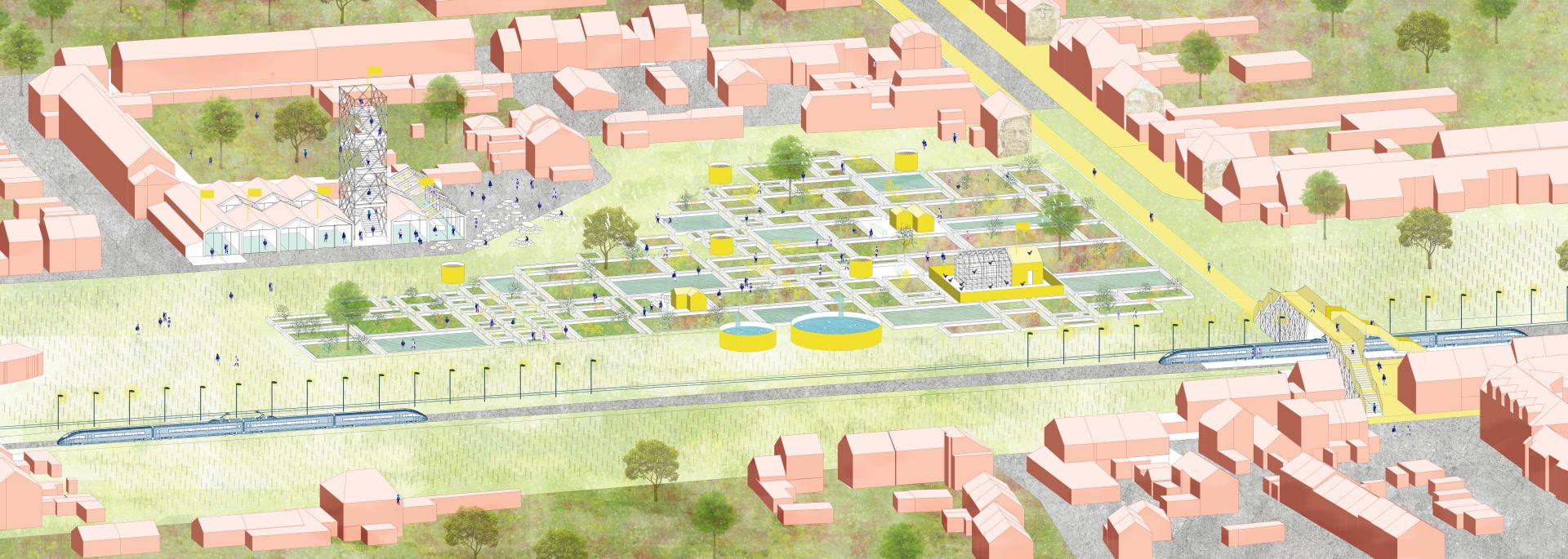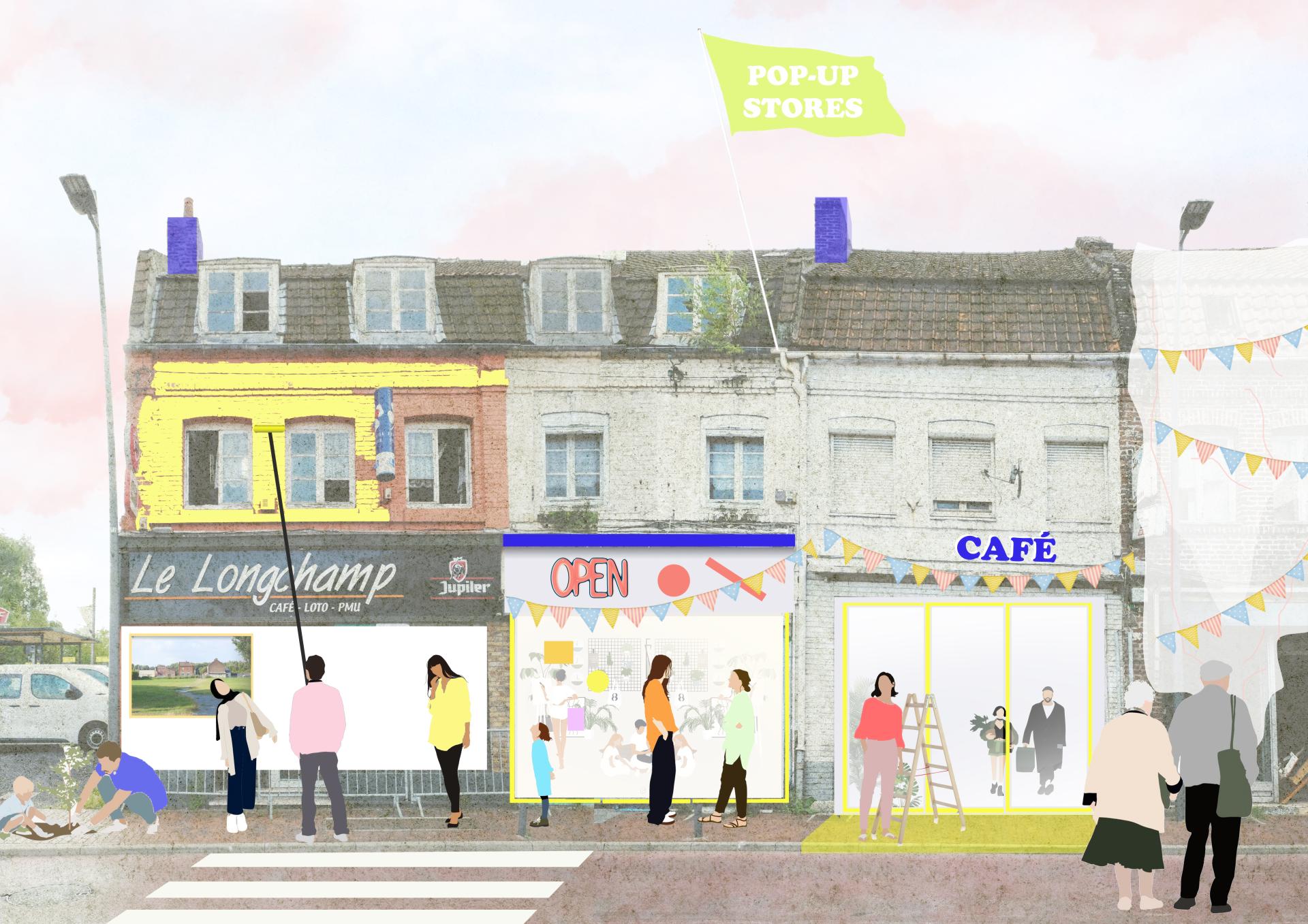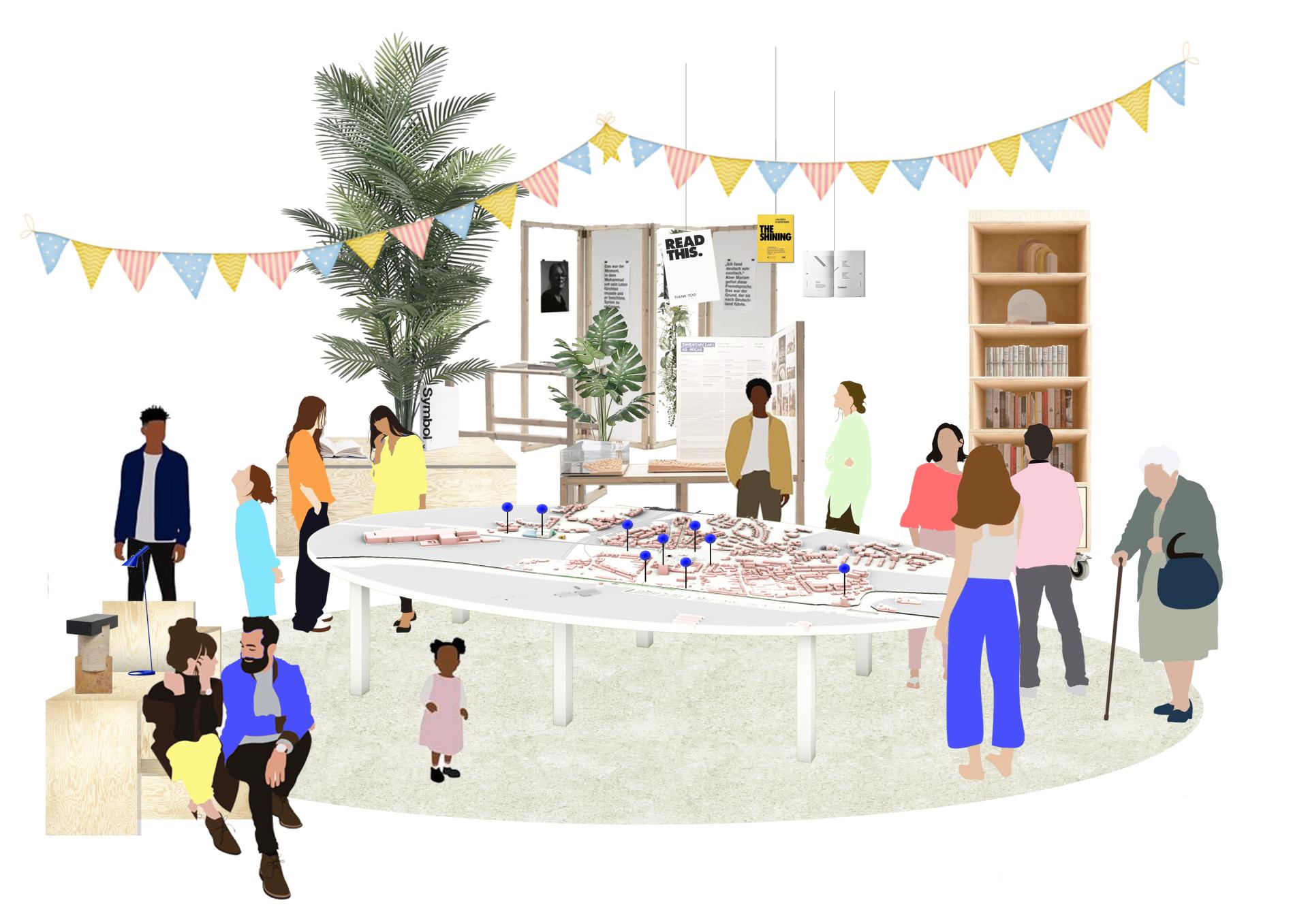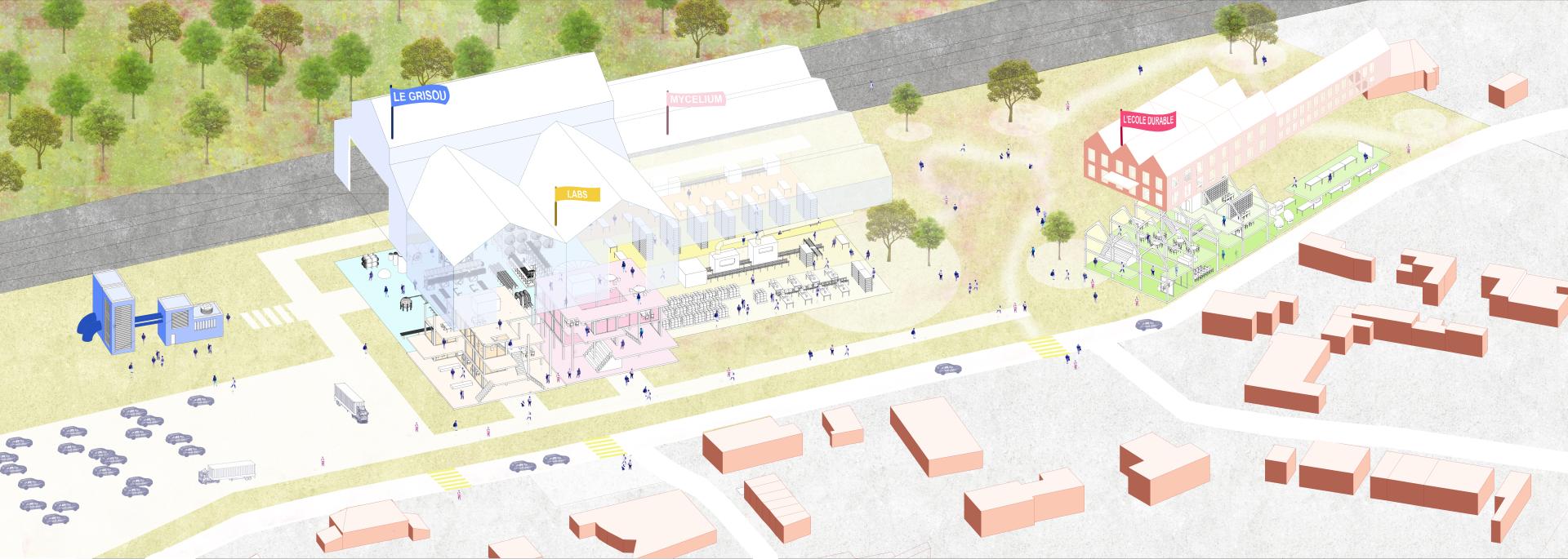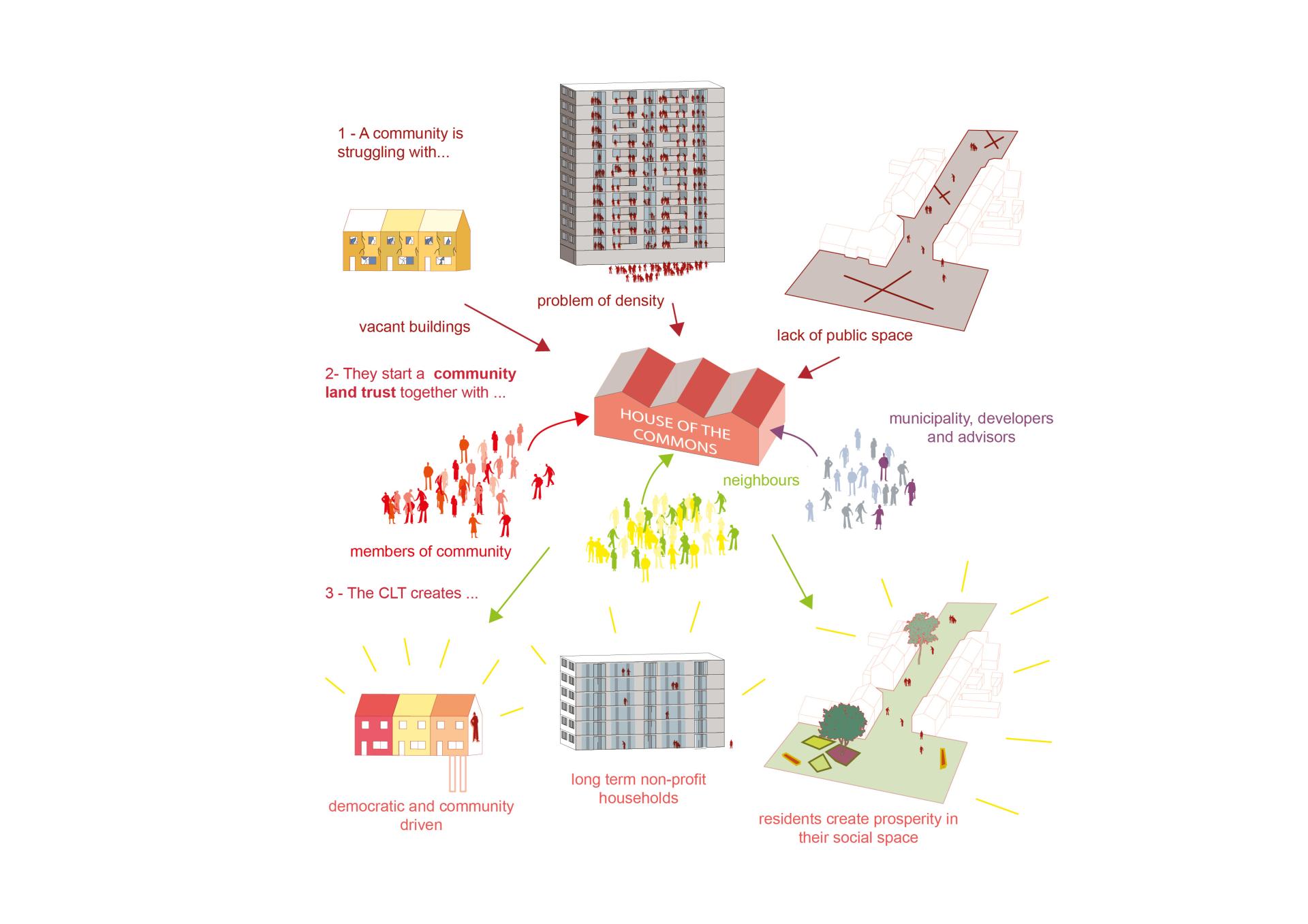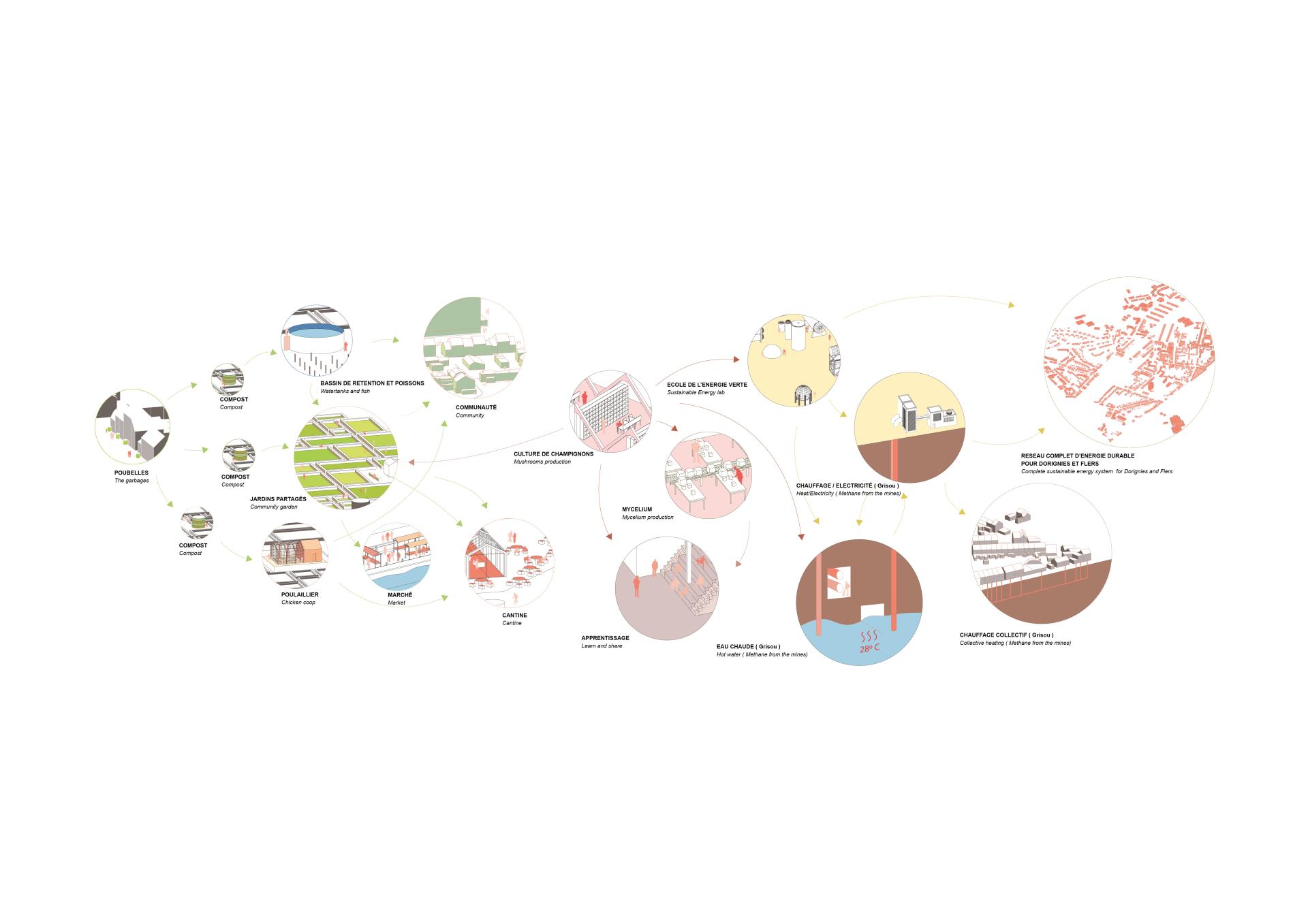Breeding Ground
Basic information
Project Title
Full project title
Category
Project Description
The greater Douais, as with all post-industrial areas, is a forgotten urban fabric awaiting a fresh start. If the term “degrowth” often describes the image of an area in decline, it is also a substantial keyword to sustainability! Therefore, Breeding Ground is inspired by a positive and sustainable degrowth, embed in a territory capable of change, and allowing smart densification and profound economic changes. Above all, applying circular tools can sprout a new commons called resilience.
Geographical Scope
Project Region
Urban or rural issues
Physical or other transformations
EU Programme or fund
Which funds
Description of the project
Summary
The concept of “Shrinking Cities” was born in Germany at the beginning of the 2000s, with the proof of the effects of the Wende on the economic and demographic growth of the cities of the Eastern Germany. In France, Dorignies and Flers are part of this decrease mainly because their prosperity was based on a mono-economy: coal mining was not only a source of big economic and demographic growth, but also the cornerstone of a life- quality and a social utopia.
Fourteen years after the closure of the coal mines, those parts of the city are still experiencing a decline in both their population and their economic attractiveness. The high rate of unemployment, the lack of public spaces and facilities, of jobs and of income enclose the area and isolate the population.
If shrinking cities appear as direct results of the end of the coal crisis, they are certainly the breeding grounds for a new metabolism based on circularity and sustainability. The industrial past has shaped the architecture and the urban planning of these spaces, revealing large wastelands and strong infrastructures. These components are nowadays perceived as fractures and scars of the city. Yet, the existence of waterways, railways and urban voids hold the potential to be a substantial wealth for the territory, allowing intelligent densification and profound economic changes.
Working in the regions of Dorignes and Flers, Breeding Ground proposes a new way of interacting with this existing industrial landscape, interrupting the narrative of decline through a series of socially and ecologically sustainable interventions.
Key objectives for sustainability
If the term “degrowth” often describes an image of an area in decline, it is also a substantial keyword to sustainability. Therefore Breeding Ground is inspired by a positive and sustainable degrowth. The vacant and sparse urban fabric of Doriginies and Flers offers us capable spaces: they are able to host a wide variety of programs and substantially accelerate new forms of economy.
Vacant spaces, time of the inhabitants, energy resources and lack of jobs are the driving forces behind a rapid transition of economic and social practices. Therefore we must consider this decrease as an opportunity to re-invent these neighbourhoods. The economic development of the area, still based on fossil resources (zinc for example) seems still weakened. Breeding Ground aims to be the driving forces for a new economy based on sustainable energies and social vitalities. The exploitation of Methane, but also of renewable materials such as the cultivation of mycelium are keys for the new economy. In the meantime a transition from the social housing park (renting) to a community land trust system will bring a new lease of life to the city. These proposals are based on low investments relying on existing infrastructure, such as transport (canal and railroad), mine galleries or garden cities. Building a renewable city means rethinking a social economy, embedded in the territory and meeting its needs: space, roof, energy, food and social interactions.
Key objectives for aesthetics and quality
In this proposal we looked for a clear, fast and efficient growing system for the urban fabric. Because of the urgency of the needs, we have chosen to develop with the different actors the following method : to plant - to cultivate - to pollinate.
Inclusivity, metabolism and the project site are strongly connected to each other if you find the common denominator. So what are those denominators? Economy, education and social interaction. The site asked for an overall strategy, we created by connecting the waterway with the railway. These points of interest were strengthened by creating an economy on both ends, a shopping street at the tracks and a floating market on the river. In between the two a lush garden is made to provide food, education and jobs. On the other side of the highway a big area for enterprises is available. This area is designated for the larger scale of the revitalisation of Douai, making the city sustainable. The community house and the CLT are created to provide the social framework. At the end, Breeding Grounds wish to be an exemplar way of re-cultivating cities, by looking for new tools carried by the community.
Key objectives for inclusion
The collective memory written by the mining past reveals existing social mechanisms based on a will-to-do and a capability to reinvent itself. Sharing, mutual aid, and social structure have been the core of the urban fabric of these mining districts. The closure of the mines has forced these territories to renew themselves and despite a national desire to regenerate an economy, these territories reveal a nostalgia and an immense need for revitalisation. What if the collective memory of mines was the ground for a new social economy? In this way, the mines wealth of the past will become the energy of tomorrow. Polluted land will be the site of new know-how and shared agriculture. The practical school will train professionals on circular know-how, inviting sustainable materials and energies. Dorignies and Flers will base their metabolism on a Community Land Trust in response to the old garden cities. The inhabitants will be the actors and the protectors of these possible spaces, where time and learning will be valued as much as generating economy. These new vitalities will be sources of sharing and social revitalisation.
Physical or other transformations
Innovative character
MAKE DO - FAIRE AVEC
Make Do is the cornerstone of the project. It means building with the community, the resources and the available space. The process will urge to think-up , to locate, to program and to activate before starting building. Inhabitants, municipalities and design teams must create a tool box in order to weave the vital synergy between programs and needs. Breeding ground symbolises the growth of a territory rich in knowledge, time, resources and landscape. Therefore, the process is based on the logic of farming (to plant/ to cultivate/ to pollinate) generating the vital needs for the community. At the heart of the process, clear project phases must be established, starting with a first vital intervention: the permanent lab or house of the Commons. This phase 1, “to plant” responds to the urgency and the need to start revitalisation tomorrow. A strong activation process can allow the fast implementation of the project in a modest and evolving economic framework. The involvement of the community is at the heart of this process. The second phase, “to cultivate”, aims to engage projects on a larger-scale. Directly inspired by the first phase of activation, these urban interventions are established in a lasting and permanent manner. They will become the perennial components of the Douaisis. The third phase “to pollinate” marks the clear transition towards a deep urban renewal made possible by a new economy. The impact of this profound revitalisation will attract and produce a growing economy enhancing the urban and social renewal.

